








| Scarce Chaser (Libellula fulva (Müller, 1764)) |









|
|
Scientific name: Libellula fulva (Müller, 1764) Common name: Scarce Chaser French name: Libellule fauve Order: Odonata Suborder: Anisoptera Family: Libellulidae Wingspan: 75mm Biotope: Still or running water bordered with dense helophyte vegetation. Geographic area: Widespread from South of France to South of England and from Finland to western Russia. Missing in the Mediterranean islands (Corsica and Sardinia), in Scandinavia, in south of Spain and south of Italy. Flight time: May to July. |
The Scarce Chaser bears dark brown basal fascia on the hind wings. These fasciae do not extend further than the triangles. The basal marks of the fore wings look like two small parallel lines. The female (and less often the male) has dark marks on the apex of the wings. The abdomen of the male is greyish blue, becoming almost black at the end. Black marks also appear after mating. The abdomen of the female is brown with black triangles. |
| [To know more about the Scarce Chaser] [Next picture] [Top] |
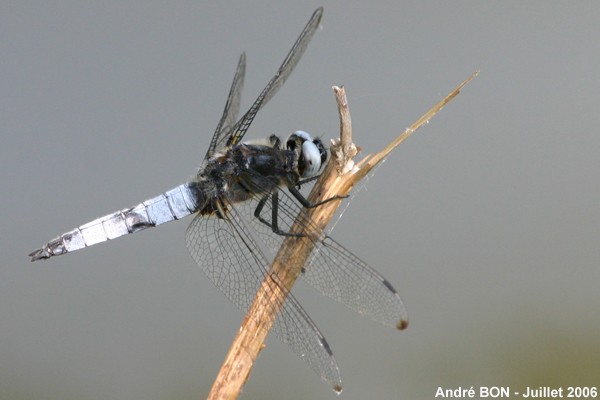
|
There are many many Scarce Chasers along this pond's shores. |
| [To know more about the Scarce Chaser] [Next picture] [Previous picture] [Top] |
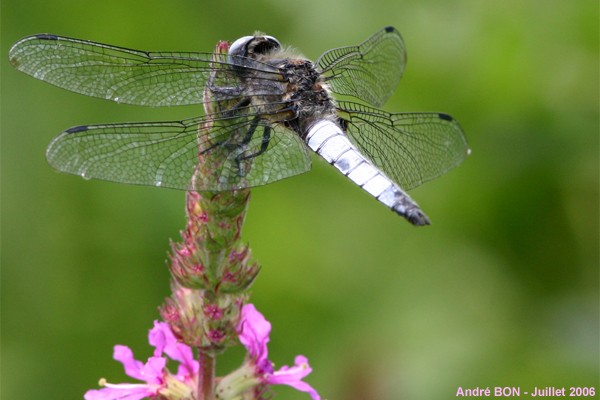
|
The Scarce Chaser often lands on top of plants or flowers. |
| [To know more about the Scarce Chaser] [Next picture] [Previous picture] [Top] |
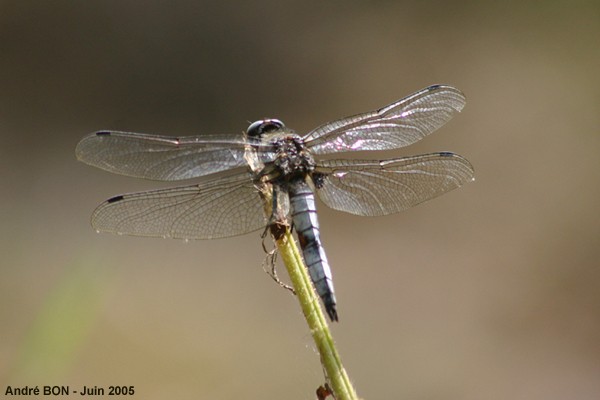
|
I have been able to identify the Scarce Chaser with the black basal fascia on the hind wings. this male was used to landing at the same place. I staid still about two meters away and had only to wait a couple of minutes. |
| [To know more about the Scarce Chaser] [Next picture] [Previous picture] [Top] |
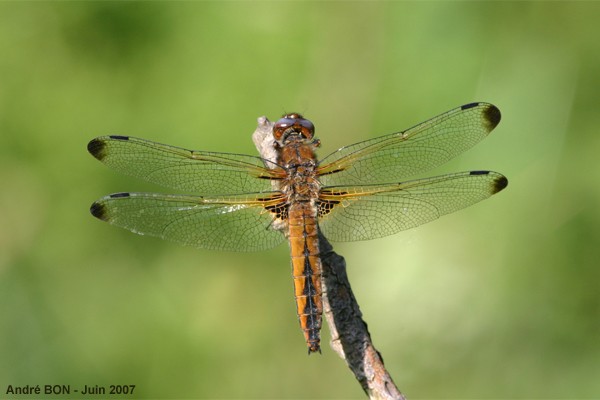
|
This female Scarce Chaser was used to coming and landing exactly at the same place without paying any attention to me. I have been able to stand close enough so that there is no need to crop the picture. |
| [To know more about the Scarce Chaser] [Next picture] [Previous picture] [Top] |
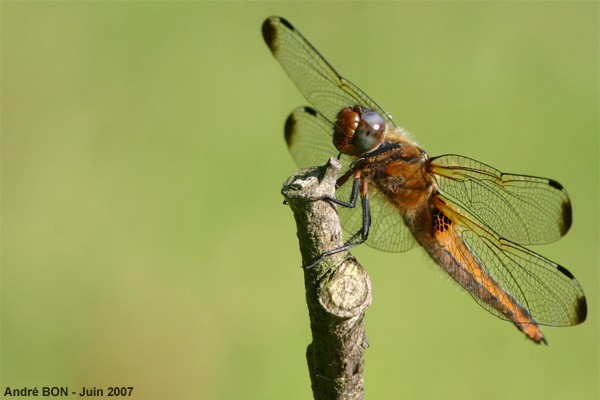
|
Here is a side view just to get a different picture. |
| [To know more about the Scarce Chaser] [Next picture] [Previous picture] [Top] |
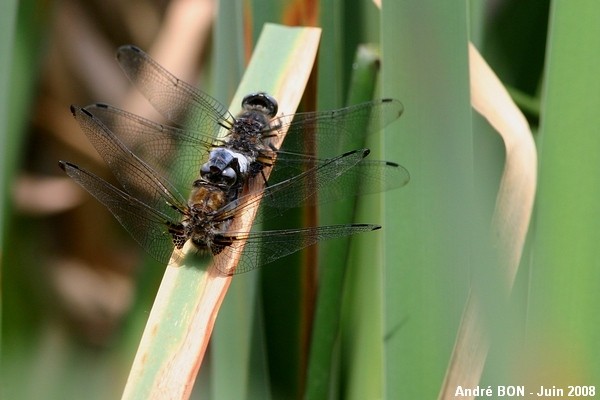
|
Mating. |
| [To know more about the Scarce Chaser] [Next picture] [Previous picture] [Top] |
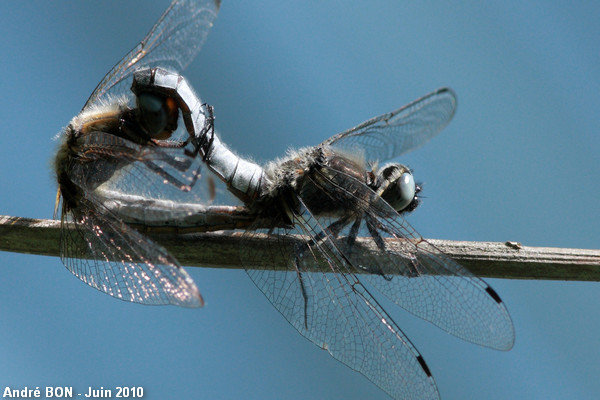
|
Mating. The female is not brown, but blue like males. |
| [To know more about the Scarce Chaser] [Next picture] [Previous picture] [Top] |
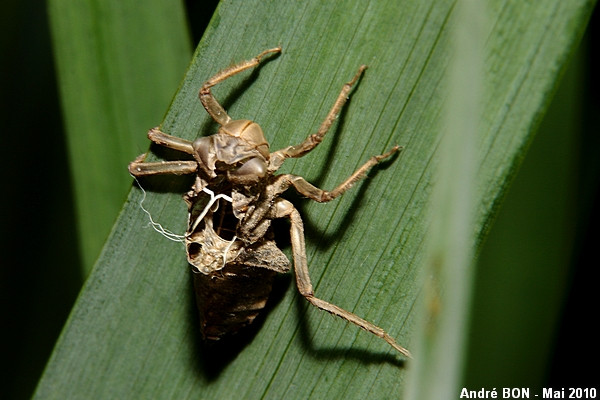
|
Before emerging to the adult stage, dragonfly larvae climb up the stems on water plants. Here is the exuvia (remains of the exoskeleton after emerging) of a Scarce Chaser. This identification is based on the fact that several freshly emerged Scarce Chasers were in the immediate vicinity. |
| [To know more about the Scarce Chaser] [Previous picture] [Top] |
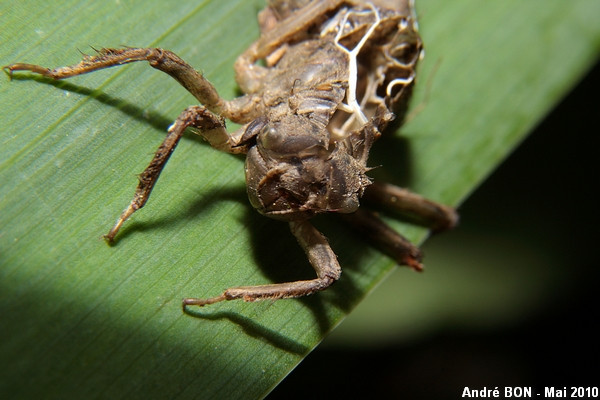
|
Close-up view on the head of the exuvia. |